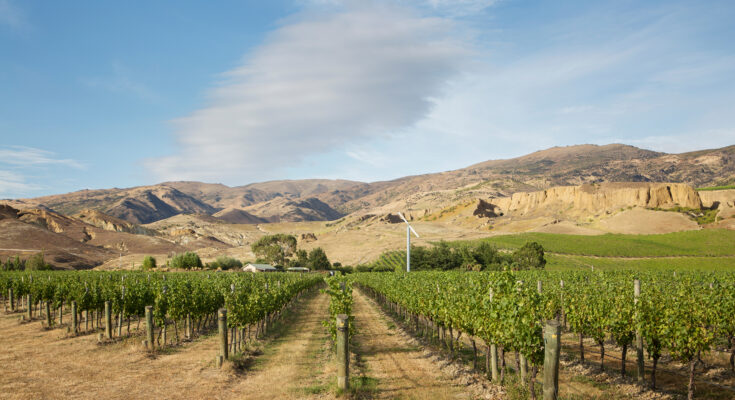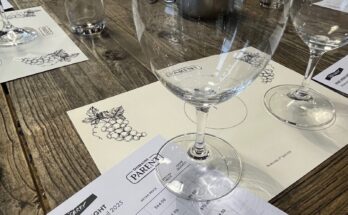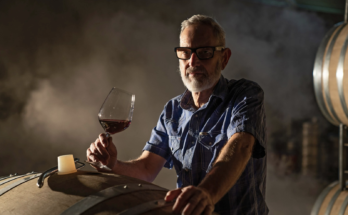On 17th June, I attended a presentation at Glengarry in Auckland – the subject being the Calvert Vineyard, where owner Owen Calvert was joined by Sarah Burton, who makes the wines sold under the eponymous Calvert label, and Jim White, the technical director at Cloudy Bay, who lease the Calvert Vineyard. This was a chance to taste wines made from fruit taken off one of the nation’s finest vineyards.
It is not a widely-known fact that an important part of the blend of Cloudy Bay’s iconic Te Wahi Pinot Noir, is fruit from the Calvert Vineyard. The 2017 and 2018 Te Wahi wines were open for tasting tonight, and not only that – but here was a rare opportunity to taste the single vineyard portion as stand-alone wines – with four bottles each of the un-blended 2018 and 2019 Calvert Vineyard wines being offered to taste alongside the other wines. These will not be released for sale, and were therefore a unique insight into different expressions of Pinot alongside wines you know and love.
There was also, naturally, a Felton Road ‘Calvert Vineyard’ Pinot Noir – the best-known wine to bear the vineyard name. As Sarah is married to Blair Walter of Felton Road, she was asked to introduce the wine.
Aside from the winemaking, it was fascinating to hear from the man whose name graces the vineyard – owner Owen Calvert. From his early days of buying the plot, developing the land as a vineyard, and the various producers who have, over the years, made different wines from those grapes, to the present day, and beyond. I took the chance to grab a couple of minutes with Owen, and promised to follow up with a set of questions to himself, and some for Sarah, to form the beginning of an article about this sensational vineyard.
Of course, I will need to stop in and visit on my next trip to Central, but for now we have this Q&A to get the ball rolling. After, I have reviewed in brief the wines that we tasted on the evening.
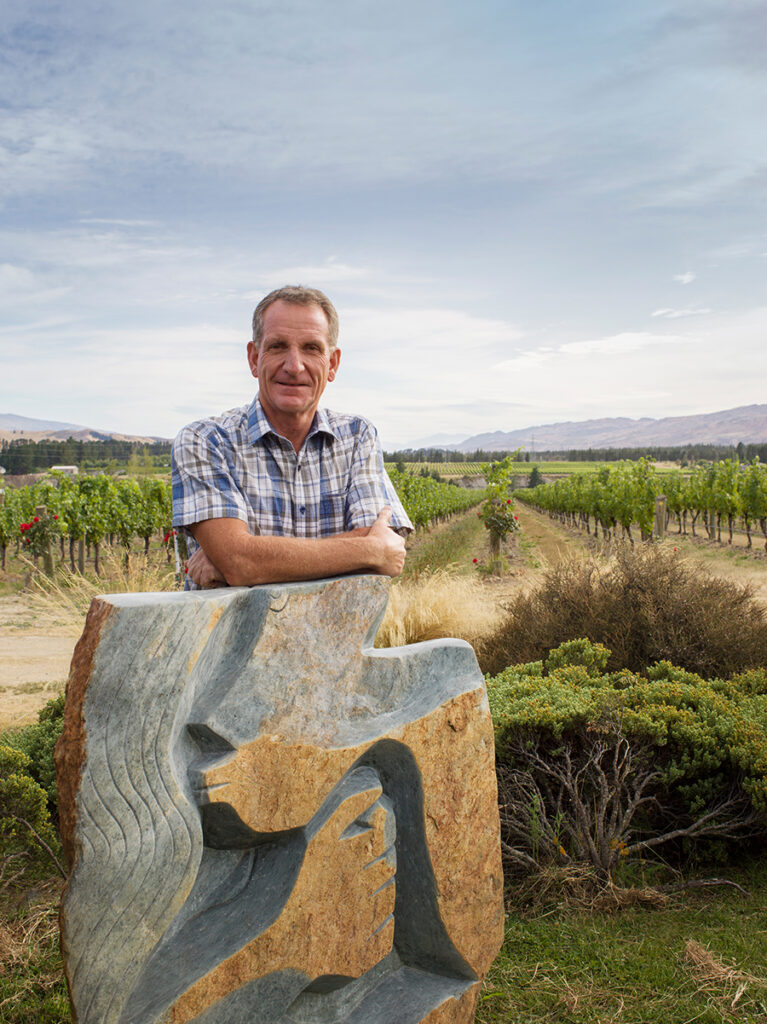
How has your region changed since grapes first arrived? Massively. I was fortunate to have bought the land in the late 80s. There was not a vine in sight in the whole Cromwell Basin. The wine industry has brought in a diverse group of people from all walks of life and many countries. It has contributed significantly to expanding tourism to the region.
You said that when buying the piece of land you weren’t intending to be planting it as a vineyard? As I said there were no vines around, thinking cherries, nuts, olives…perhaps deer.
What do you think is ahead for the future of Pinot Noir around you? Is it moving into the sub-regional definitions, rather than ‘Central Otago’ There is definitely a place for both sub-regional and regional expressions of Central Otago wine. Certainly winegrowers are becoming much more aware of what sub-regional differences can contribute to a blend. (Sarah).
Can you say what defines a Bannockburn Pinot Noir compared to others in Central Otago for example? What do you get from Felton Rd that you don’t see in Marlborough or Martinborough? There is a natural balance of sweetness, acidity and tannin levels which comes through in the fruit from the Bannockburn vines which have themselves become naturally balanced with regards to their soil composition, irrigation and climate over time. The most obvious trait from our Bannockburn vineyard is that we see a lot more structural based characteristics coming through in the wine. (Sarah)
At the evening presentation, I think people recognised you are in a special spot. Can you tell us about your land – vineyard, soils, elevation, etc? Gently sloping to the north, with an amphitheatre of hills behind, perfect to capture sun and heat.
Very even and consistent topography and soil profile. Very happy to have started the process of converting to organic in 2003.
Are you hands-on with the vineyard? No – it is currently leased to Cloudy Bay and they take care of the day to day activities. They do however keep Sarah and I abreast of what is going on.
What’s your favourite part of the year, as wine-growers? I love the spring … always exciting to see buds emerging, and of course the harvest.
Plans for the future? Passed down through the family? Visitor Centre / Gift Shop? Certainly I would love it if my children kept it going and I understand it’s their intention to do so
There are a few projects / ideas in the planning phase that I believe will compliment the wine industry. The new Central Otago Bike trail which has been extended along Felton Road is going to add another dimension to the visitor experience Bannockburn can offer.
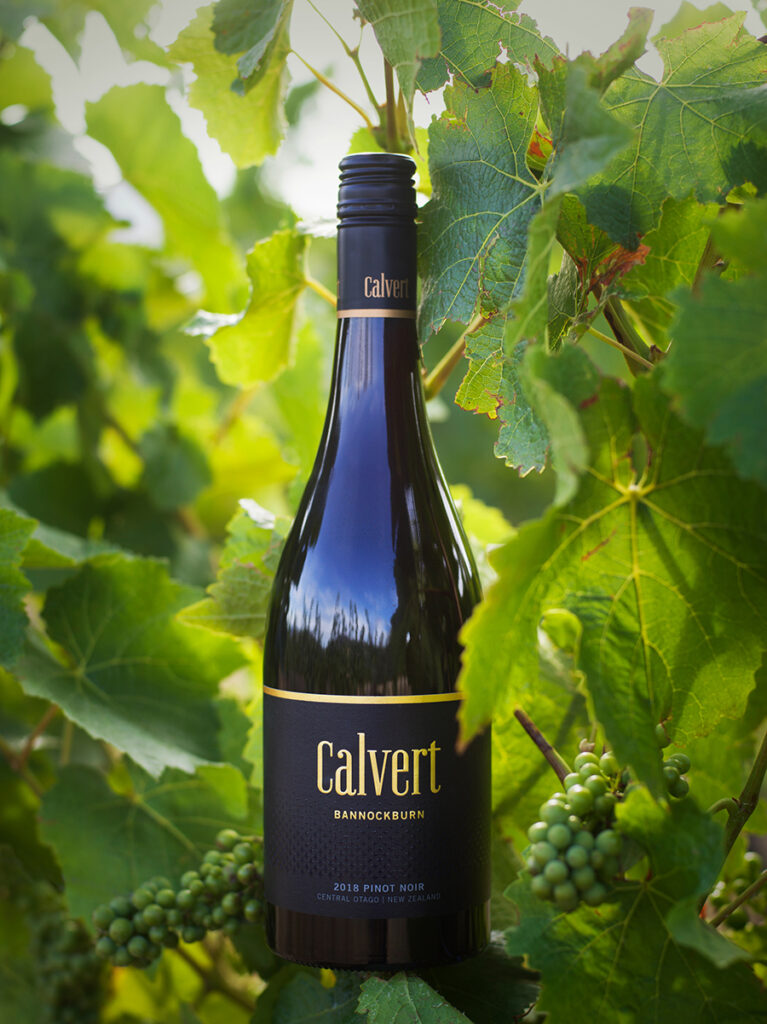
Do you see the winemaking as artistic or scientific? I believe it is a finely tuned mixture of both elements. It is important to understand the science of winemaking but equally it is important to know when to leave the wine alone and let it express itself naturally without human intervention. (Sarah)
How much difference do clones bring to the mix, compared to site/terroir? I believe clones are important in the mix as they each offer very different characters and flavour profiles to a wine. Site and terroir is the most crucial element but with clonal variances on top you can craft a completely different wine using different clones. (Sarah)
Do you have thoughts on the wines that are made from ‘Calvert fruit’? Only that they are all REALLY good. I am humbled that the vineyard has gained such a reputation and recognition from the wines associated with the property (FR, PV. CR and CB and now Calvert ). Huge credit and thanks to the viticultural teams and winemakers involved.
What are your favourite other wines, and do you have any stories to tell about discovering those? I don’t have favourites. If I recall correctly I believe in the mid to late 1980’s as a very uneducated wine consumer I tasted my first Pinot Noir – Ata Rangi and thinking this is pretty darn good!
If you could share a bottle of Calvert with anyone, who would that be? Wow – tough question. There are so many individuals from the many chapters of my life I would like to do that with.
When I was 9 years old I was introduced to tramping and in my early teens to mountaineering – Sir Edmund Hillary was a person I always admired, not only for his mountaineering achievements, but also for his diplomacy and philanthropy… and all along being so incredibly modest. I would certainly enjoy sharing a bottle with Sir Ed… perhaps two!
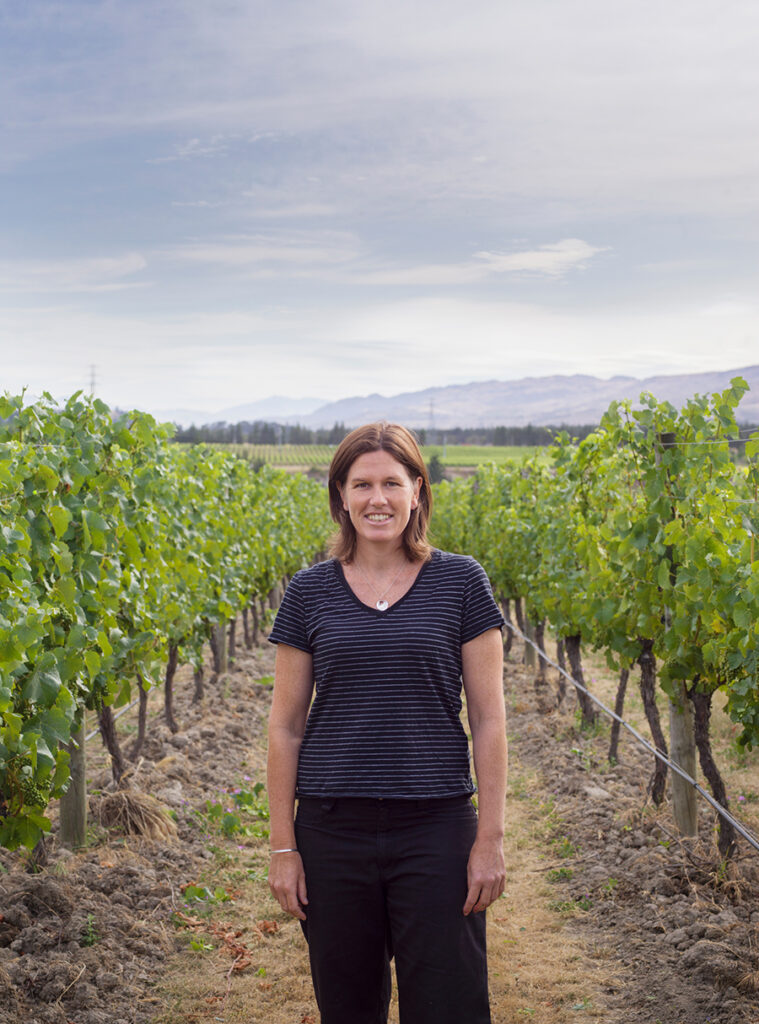
If you could make other wines, what would they be? Sparkling wine. I was fortunate enough to experience the joy and turmoil of creating sparkling wine while working at Cloudy Bay in Marlborough and I really enjoyed the winemaking aspects involved, not to mention I love to drink Sparkling wine. (Sarah)
Do you have any methods that you’ve learnt that now help define your work? For example, what are your thoughts on using whole bunch in your winemaking? I really enjoy the addition of whole bunch fruit into Pinot Noir ferments. For the 2021 vintage I ran a trial with our 2 fermenters where one is 25% and the other 12.5% whole bunch. Already just after pressing off I can see an obvious difference in the wines and I much prefer the interest the whole bunch gives to the fermentation. Other than that the main thing I am learning is to do less.. I grew up with an all science approach to winemaking and am now trying to harness the power of standing back and letting the wine express itself. (Sarah)
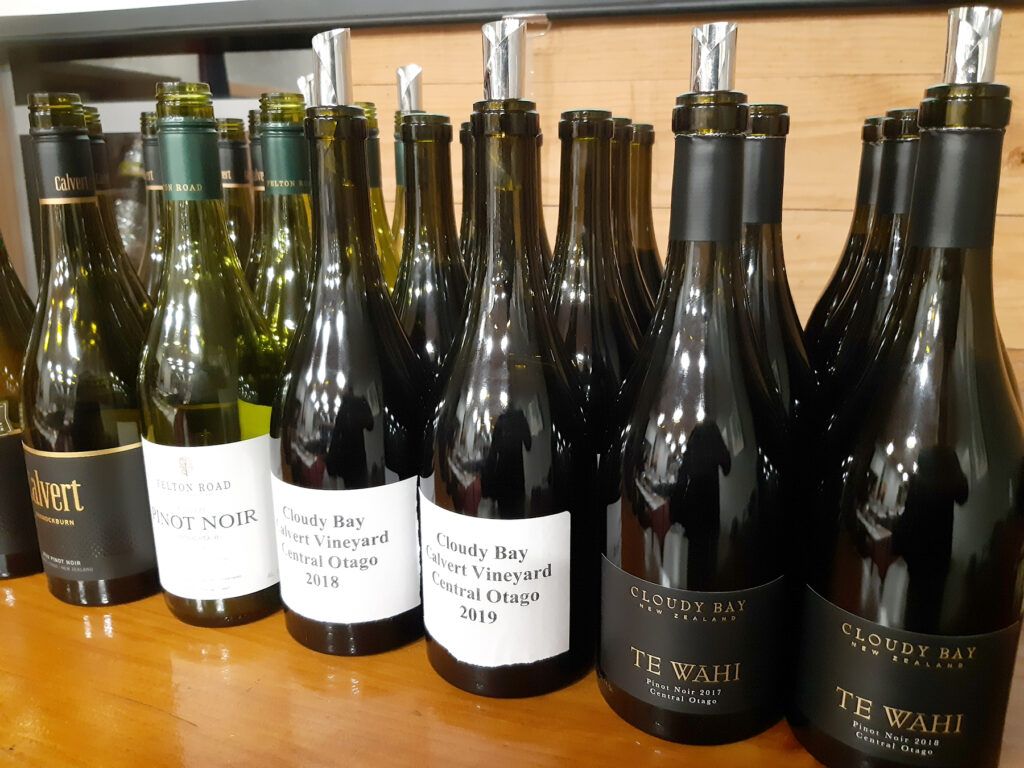
Calvert Pinot Noir 2018. RRP $74.99. Expressive, with cherry, plum, cocoa and spice notes on the nose. Medium acidity with ripe, lithe tannins. In a fruit-forward style with a core of pure, concentrated fruit. Oak sits quietly in the background. A layer of savoury flavour emerges as it opens up in the glass, with some herbal essence and minerality. Generous and a lengthy finish.
Calvert Pinot Noir 2019. Not released. More purity, with a little less ripeness and warmth than the ’18. Lighter in colour. A clearer expression and more linear, with bright acidity. Not driven by oak or tannins – just everything in harmony. Simple but brilliant wine, showcasing fruit and terroir. Wine of the night.
Felton Road Calvert Pinot Noir 2018. RRP $93.99 Floral, aromatic with bayleaf, thyme herbals and a gentle spiciness. Elegant and beautifully presented. A deep richness, with an earthy layer that also shows a sweetness with some air – toffee and mocha. More polish than the straight ‘Calvert’ wines preceding.
Cloudy Bay Calvert Vineyard Pinot Noir 2018. Not for sale. Big, plush and ripe. You can see the similarities from wine #1 here, but it’s smoother and refined. Same clarity of fruit – precise and unctuous. Oak is more obvious and applied, but shows a sweetness and enrichment that is appealing, and of ‘a style’ that is well-suited, but, for me, takes something away from the purity of what’s underneath.
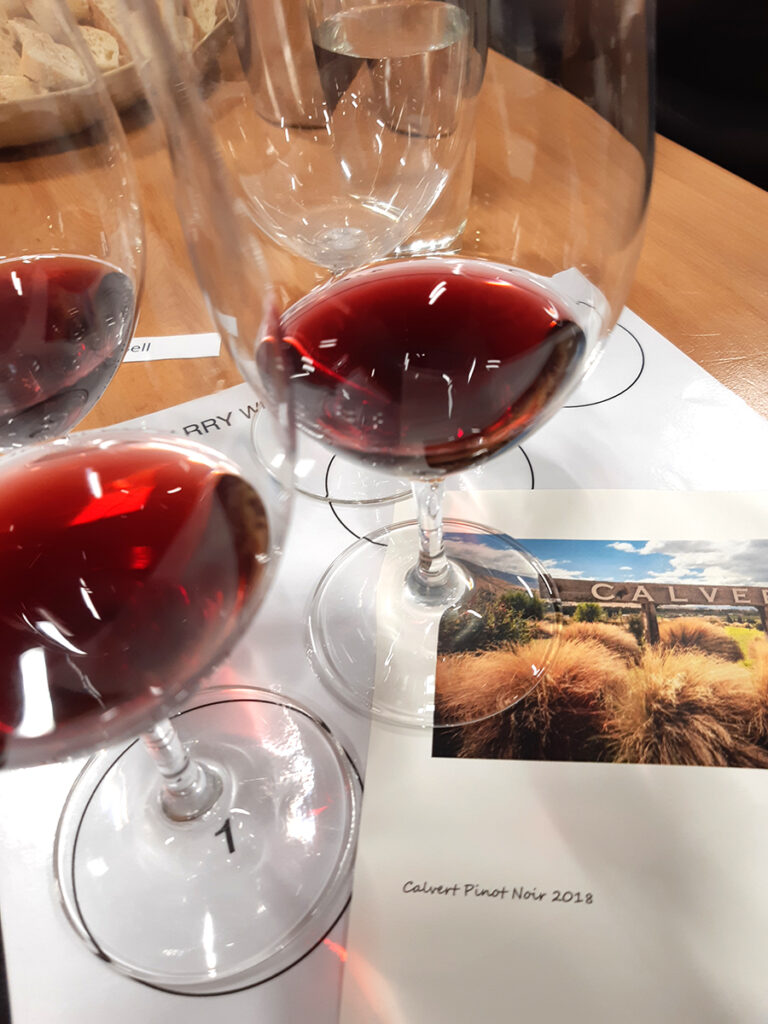
Cloudy Bay Calvert Vineyard Pinot Noir 2019. Not for sale. Not much between ’18 and this – a little more delicacy and finesse. Also more spice, showing a little pepper, cloves, sumac. Good depth, with layers of savouriness – smoked meat and an earthy, loam character. Elegant, glossy and refined.
Cloudy Bay Te Wahi Pinot Noir 2017 and Cloudy Bay Te Wahi Pinot Noir 2018. Neither for sale. Lovely, complete expressions of Central Otago Pinot. Lustrous and a little playful. Lush red fruits with rosehip, raspberry and plum. Smokiness, and toasty, sweet oak and dark, roasted spice. Refined but hedonistic, with an intense, muscular structure. Leather and tar emerge on the ’18, whilst the ’17 remains quite tight and linear, both swept along on juicy, vibrant fruit.

